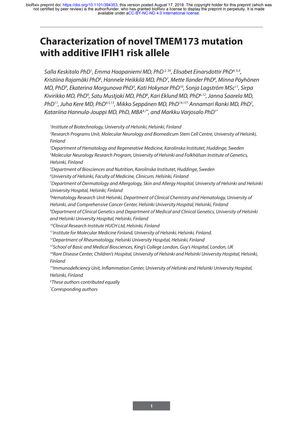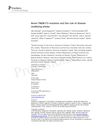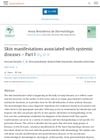Characterization of Novel TMEM173 Mutation with Additive IFIH1 Risk Allele
August 2018
in “
bioRxiv (Cold Spring Harbor Laboratory)
”
alopecia photosensitivity thyroid dysfunction livedo reticularis nasal septum perforation facial erythema skin vasculitis STING protein TMEM173 gene IFIH1 gene inflammatory pathways interferon signature inflammasome activation peripheral blood mononuclear cells PBMCs hair loss skin sensitivity thyroid issues skin discoloration nose septum hole red face skin inflammation immune protein gene mutation immune gene inflammation pathways immune response signature immune activation blood cells

TLDR A new mutation in the TMEM173 gene and a risk allele in IFIH1 cause a unique set of immune-related symptoms.
The document reports a novel gain-of-function mutation G207E in the TMEM173 gene, which encodes the STING protein involved in immune response. This mutation, along with a risk allele in IFIH1, was found to cause a unique clinical phenotype that includes alopecia, photosensitivity, thyroid dysfunction, and features of STING-associated vasculopathy with onset in infancy (SAVI), such as livedo reticularis, nasal septum perforation, facial erythema, bacterial infections, and skin vasculitis. The study suggests that single residue polymorphisms in TMEM173 and the IFIH1 T946 risk allele contribute to the variability in clinical presentations observed in the affected family. The G207E mutation was shown to lead to constitutive activation of inflammatory pathways in HEK cells and abnormal interferon signature and inflammasome activation in patient peripheral blood mononuclear cells (PBMCs). The research also indicates that the mutation may impair cellular trafficking of the STING protein. These findings help to elucidate the molecular mechanisms behind STING-related diseases and the complex interplay of genetic factors influencing the phenotype.




